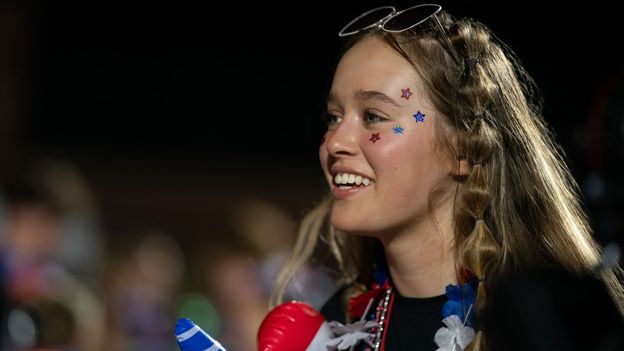Yet one of the most refreshing elements was that those who disagreed showed compassion and respect. In one key moment, Worthmore and Cecilia Bartin, a liberal activist, have a lively yet civil debate on gun ownership. “There was a huge willingness to listen, that gave me a lot of optimism,” says McBaine.
“Teenagers are elastic too. And one of the questions we would ask kids when we were auditioning them was, ‘what have you changed your mind about? Are you capable of changing your mind? If so, how did you do that?’,” says Moss.
A seat at the table
Another major issue Girls State tackles is the lack of female representation in the US government, a problem several participants criticised, and which is illustrated at the start of the film. Photos of the US Congress from 100 years ago, with a single woman surrounded by males, are juxtaposed with eerily similar pictures from subsequent decades, through to 2020, where Speaker Nancy Pelosi and Donald Trump are seen in the Cabinet Room, amidst a sea of men.
According to the Pew Research Centre, in 2023 women made up 29.9% of US state Senate seats, and 33.7% of state House or Assembly seats, placing the US 71st in the world for female representation in national parliaments for February 2024. It’s a problem not lost on Girls State participants. Though topics like abortion, gun violence and climate change are discussed, the documentary includes complaints from the girls that in the early parts of the programme, there is more emphasis on the girls supporting each other, rather than discussing issues and allowing serious and substantive political debates – which is not the case for the boys. The girls “want to have their voices heard”, says McBaine.
Yet an even more systemic issue arises in the film, one that even comes to permeate the very event they are attending. The documentary shows how Worthmore uncovers a $400,000 funding discrepancy between the girls’ and boys’ state programmes. The girls’ programme – with around 500 delegates – is given $200,000, while the boys’ programme of just over 800 delegates receives $600,000.


